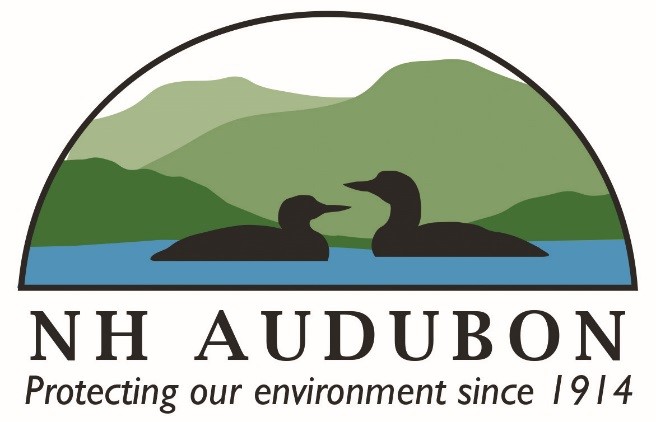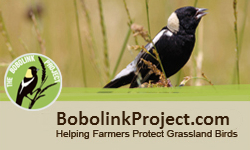Pam Hunt
Dr. Pam Hunt has been a conservation biologist at New Hampshire Audubon since 2000, and for most of her tenure has also worked closely with the NH Fish and Game Department in the unofficial capacity of �State Ornithologist.� Her diverse tasks can be best summed up as involving the coordination and prioritization of avian research and monitoring in the state, including being a core member of the team that developed both of New Hampshire�s Wildlife Action Plans.
Specific areas of interest include habitat use by early successional birds (particularly whip-poor-wills), conservation of aerial insectivores (e.g., swifts and swallows), and the effects of events outside the breeding season on long-distance migrants. Most of her work with grassland birds involves periodic monitoring of species of concern in the state, although she has also been involved in some outreach and planning at a more regional level.
Beyond birds, Pam also coordinated �NH Dragonfly Survey,� a five-year project that mapped distributions of these insects throughout the state, and remains active in the dragonfly field. Pam holds a Bachelor�s degree from Cornell University, Master�s from the University of Montana, and Ph.D. from Dartmouth College. When not doing avian conservation, you�re most likely to find her curled up in a chair writing a book or running around at a Renaissance Faire somewhere in New England.
Selected Publications
Bried, J.T., B.J. Hager, P.D. Hunt, J.N. Fox, H.J. Jensen, and K.M. Vowels. 2011. Bias of reduced-effort community surveys for adult Odonata of lentic waters. Insect Conservation and Diversity. doi: 10.1111/j.1752-4598.2011.00156.x
Burson, S.L., III, L.R. Reitsma, and P.D. Hunt. 2005. Conservation implications of multiple habitat use by Northern Waterthrushes during the non-breeding season. Journal of Caribbean Ornithology 18:72-76.
DeLuca, W., R. Holberton, P.D. Hunt and B.C. Eliason. 2013. Blackpoll Warbler (Setophaga striata), The Birds of North America Online (A. Poole, Ed.). Ithaca: Cornell Lab of Ornithology; Retrieved from the Birds of North America Online: https://birdsna.org/Species-Account/bna/species/bkpwar. DOI: 10.2173/bna.431
Hunt, P.D. 1996. Habitat selection by American Redstarts along a successional gradient in northern hardwoods forest: Evaluation of habitat quality. Auk 113:875-888.
Hunt, P.D. 1998. Evidence from a landscape population model of the importance of early successional habitat to the American Redstart. Conservation Biology 12: 1377-1389.
Hunt, P.D. 2012. The New Hampshire Dragonfly Survey: A Final Report. Report to the New Hampshire Fish and Game Department, Nongame and Endangered Species Program. Audubon Society of New Hampshire, Concord, New Hampshire.
Hunt, P.D. 2013. Habitat use by the Eastern Whip-poor-will (Antrostomus vociferus) in New Hampshire. Report to the New Hampshire Fish and Game Department, Nongame and Endangered Species Program. Audubon Society of New Hampshire, Concord, New Hampshire.
Hunt, P.D. 2016. Extra-territorial movements by Eastern Whip-poor-wills. North Am. Bird Bander 41: 97-102.
Hunt, P.D., M. Blust, and F. Morrison. 2010. Lotic Odonata of the Connecticut River in New Hampshire and Vermont. Northeastern Naturalist 17: 175-188.
Hunt, P.D. and Flaspohler, D.J. 1998. Yellow-rumped Warbler (Dendroica coronata). In The Birds of North America, No. 376 (A. Poole and F. Gill, eds.). The Birds of North America, Inc., Philadelphia, Pennsylvania.
Hunt, P.D., L. Reitsma, S.L. Burson III, and B. B. Steele. 2005. Spatial and temporal distribution of Northern Waterthrushes among nonbreeding habitats in southwestern Puerto Rico..Biotropica 37: 697-701.
Hunt, P.D., M.B. Watkins, and R.W. Suomala. 2011. The State of New Hampshire’s Birds – A Conservation Guide. New Hampshire Audubon, Concord, New Hampshire.
McKinley, P., and P. Hunt. 2008. Avian Use of the Hampton-Seabrook Estuary: 2006-2007. Report to the New Hampshire Fish and Game Department, Nongame and Endangered Species Program. Audubon Society of New Hampshire, Concord, New Hampshire.
Reitsma, L., P. Hunt, S.L. Burson, III, and B.B. Steele. 2002. Site fidelity and ephemeral habitat occupancy: Northern Waterthrush use of Puerto Rican black mangroves during the nonbreeding season. Wilson Bull. 114: 99-105.
White, E.L., P.D. Hunt, M.D. Schlesinger, J.D. Corser, and P.D. deMaynadier. 2015. Prioritizing Odonata for conservation action in the northeastern USA. Freshwater Science 34:1079–1093.






